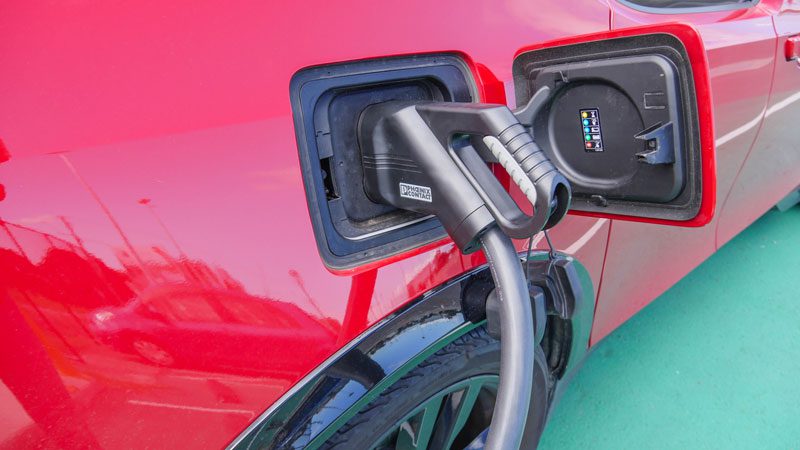Returning recently to an early model iMiEV, Bryce Gaton seeks to answer the seemingly unanswerable question.
If you’re in the market for a new EV, ones with driving ranges roughly equivalent to petrol cars, you will find that they start in the mid to high $60,000 range – with the bulk starting at over $70k. Yet if you check the car sales listings, you’ll find other new EVs starting in the mid $40k bracket.
The difference is in the battery size: the cheaper EVs have noticeably shorter driving ranges. The bottom line is when it comes to EVs, range comes at a cost.
In fact, the biggest single cost item in an EV is its battery – meaning the longer the range you want, the more battery you will need, so the higher the cost.
So the question arises: How much range is really enough? Or, looked at another way: “Do you need to pay for a driving range you may never use?”
Early EVs had short range for high cost
Back in 2011, the two main EVs available (Mitsubishi iMiEV and Nissan Leaf) came with maximum realistic ranges of (respectively) around 110 and 135km.
At that time, they also cost a bit over $60,000 each. These easily met the average daily driving distance (in Melbourne this is 32km) and many people bought them for just that – but these early EVs fell well-short for people who drove distances outside of the ‘average’.
Now you can get EVs with achievable driving ranges of 400 – 600km for not a lot more money than those early Leafs and iMiEVs. This is primarily a result of falls in EV battery prices over the past decade – from nearly US$1,200 per kWh in 2010 to around US$128 per kWh now.

I enjoyed my early EVs (initially a converted Hyundai Getz, then a 2011 Nissan Leaf).
However, my vehicle use-case demanded I keep a fossil-fuelled car for longer trips and towing. It was only with the Kona EV that I retired my last ICE vehicle to minimal use as a heavy tow car and used the Kona for everything else.
Now, there is a flip side to falling EV prices due to ever-cheaper batteries. EVs with smaller batteries are available (with more to come soon) – so if you want to get a cheaper EV sooner, you could choose one of these – or even go for a second-hand EV with a short range.
Do second-hand older EVs stack up?
The question is: do they stack up as a practical car, or are you doomed to living an eternal ‘range anxiety nightmare’?
After all, I gave up driving short-range EVs when I purchased my Kona electric in 2019.
Back then, I felt a sudden freedom from not having to do from daily recharging and checking the distance to/from a new destination. But that was particular to my driving use-case.
The Kona not only replaced all my fossil miles driving around Victoria and interstate, it fits a reasonable amount of ‘stuff’ in the back, does longer runs to EV consults and presentations all over Melbourne and nearby regions – AND it covers shopping trips and commuting about town.
All up, it makes a good ‘Swiss Army Knife’ that does (almost) all the jobs I ask of a car.
How far do you drive most of the time?
But do we all need that? What if you are retired and only do local trips – or live in a smaller city or regional town where the longest daily trip is even less than a daily large city commute? After all, when it comes to petrol/diesel vehicles – people buy all sorts of different cars to suit their needs. From a VW Up to a diesel 4WD dual-cab ute, it is a matter of ‘horses for courses’ – and it is the same for EVs.
So it is no surprise that a common question I get after my public EV presentations is “Will (insert model name) cheaper EV do the job I want?” It’s also one I’ve personally returned to recently, having owned a Mitsubishi iMiEV as a second car for much of this year.
In fact, using the iMiEV as a second car, I have been pleasantly reminded at how versatile a shorter range EV can be. (Especially a small, nimble one like the diminutive iMiEV). It has been fun to drive around town, plus it breezes into small parking spaces.
Even with its low remaining range (around 70km) I can cover a good quarter of Melbourne’s sprawl – more if I am pressed and stop briefly for a DC fast charge. (Something I could not do in earlier times when there were only two DC chargers in all of Melbourne). For those whose use-case involves only local driving and the occasional run of 100km or so, even a 70km range combined with available DC charging could work.
The key to owning a short-range EV is yes, you do have to remember to recharge it at the end of every day. (If I didn’t, I either plan an initial detour via a DC charger … or wait a couple of hours for it to charge enough for my trip before heading off). Neither is difficult to plan for if you work from home or are retired.
Of course, an iMiEV is the ultimate outlier in the short-range stakes. All the subsequent shorter range EVs here come with multiples of the range my iMiEV or a first generation Leaf offers.
How much range is really enough for you?
So back to my initial question: “How much range is really enough?”
The answer: It all depends on what you want your car to do.
If you are a two car family, a new ‘standard range’ EV (as many manufacturers somewhat euphemistically call their shorter-range battery versions) would easily replace the shopping, kid drop-off and general run-around driving that second cars do … and still only need charging once or twice a week.
In fact, for someone who does only short trips, it could be fine as their primary car – especially as it can be boosted for occasional mid-range (150 to 300km) trips by use of the ever expanding DC charging network.
If considering a second-hand purchase, it also helps that as EVs age, enterprising businesses are popping up to offer battery replacements and upgrades to replenish that range back to new. (Or, in the case of my iMiEV, an aftermarket battery upgrade could double its original range!)
The key is to properly analyse your car needs (and battery replacement options/costs) before choosing an EV. A cheaper, shorter range one may be all you need. On the other hand, if buying on price alone without checking the capabilities of your choice against your use-case, you could be badly disappointed.
New, used and coming BEV options to Australia
| New | |||||
| Make/model | Year | WLTP range1 km |
Battery size/s: kWh | Max charge rates in kW, AC(DC) | Price4 |
| BYD Atto 3 (std range) | 2022- | 345 | 50 | 7(70) | $47,000 |
| Hyundai Kona electric–SR | current | 305 | 39 | 7.2(44) | $60,500 |
| Hyundai Ioniq electric | current | 311 | 38 | 7.2(44) | $54,000 |
| Mazda MX-30 E35 Astina | current | 200 | 35.5 | 6.6/50 | $65,0005 |
| MG ZS EV 2022 update | current | 320 | 51 | 6.6(75) | $45,000 |
| Mini Cooper SE | current | 232 | 32.6 | 11(50) | $62,800 |
| Nissan Leaf ZE1 | current | 270 | 40 | 6.6( 50) | $57,000 |
| Coming soon6 | |||||
| Cupra Born (small batt.) | Q1 2023 | 340 | 45 | TBC(TBC) | TBC |
| GWM Good Cat (small batt.) | Q4 2022? | 320 | 40 | TBC(TBC) | $45k TBC |
| MG4 (small batt.) | H1 2023? | 350 | 51 | TBC(TBC) | $45k TBC |
| Second-hand | |||||
| Years available |
Approx. real-world range2,3
|
Approximate
second-hand price |
|||
| BMW i3 60Ah | 2014-2017 | 130/90 | 19 | 7.4(47) | $40k up |
| BMW i3 94Ah | 2017-2018 | 165/125 | 33 | 7.4(49) | $55k up |
| Hyundai Ioniq | 2017-2019 | 200/200 | 30 | 6.6(69) | $35k up |
| MG ZS EV | 2019-2022 | 250/250 | 44.5 | 6.6(76) | $39k up |
| Mitsubishi iMiEV | 2010-2012 | 110/70 | 16 | 3.6(40) | $11k up |
| Nissan Leaf ZEO | 2011-2013 | 135/60 | 24 | 3.6(46) | $15k up |
| Renault Zoe | 2017-2022 | 280/280 | 40 | 22(NA) | $35k up |
Source: AEVA © B Gaton)
Notes to table:
- WLTP (Worldwide Harmonized Light vehicles Test Procedure) derived range in Bold italic. WLTP standardised cycle: 57% urban routes, 25% peri-urban routes, 18% motorway routes. WLTP range is approx. 30% lower than NEDC, but about 10% higher than US EPA. (For city through to outer suburban areas – WLTP is the likely range you will achieve. If you drive is more a mix of suburban to regional, for an estimate of your likely range – either source the US EPA figure, or subtract 10% from the WLTP figure).
- WLTP was not in place when most of these EVs were produced. Instead, the approximate real-world ranges reported by users from the time are given.
- X/Y. X = new range, Y = likely current range.
- On-the-road pricing – based on current listings in Carsales.com.au
- List price for the Mazda: low km dealer demos seen down to $53,000
- These models will offer multiple battery sizes. Smallest battery size version listed.

Bryce Gaton is an expert on electric vehicles and contributor for The Driven and Renew Economy. He has been working in the EV sector since 2008 and is currently working as EV electrical safety trainer/supervisor for the University of Melbourne. He also provides support for the EV Transition to business, government and the public through his EV Transition consultancy EVchoice.

